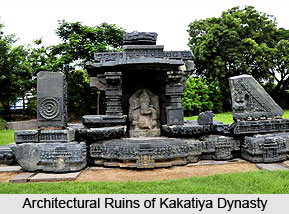 Pemmasani Nayaks were the descendants of a martial clan who dwelt in Andhra Pradesh and were contemporaries of the kings of Gandikota. They belonged to Kamma clans who used to serve the Kakatiya Dynasty and had shifted to Vijayanagara around 1370 CE, following the decline of Musunuri Nayaks in the region of Warangal.
Pemmasani Nayaks were the descendants of a martial clan who dwelt in Andhra Pradesh and were contemporaries of the kings of Gandikota. They belonged to Kamma clans who used to serve the Kakatiya Dynasty and had shifted to Vijayanagara around 1370 CE, following the decline of Musunuri Nayaks in the region of Warangal.
History of Pemmasani Nayaks
Numerous Nayaks who had rendered their services to Bukka Raya had moved to Vijayanagara. Bukka Raya was an acquaintance of Kapaneedu and he had protected the Hindu Dharma in the area of Dakshnapatha or Deccan. The clan of Pemmasanis had received accolades for their bold defence of Vijayanagar Empire. Timma Nayudu, who was the father of Pemmasani Venkatapani Nayudu was one of the ancestors of the Pemmasani clan. Timma Nayudu was granted the gift of Yadaki Paragana in the year 1431 as an appreciation of his bravery which he had displayed during a battle with the Muslim armies. The Battle of Gulbarga was won by Proudha Devaraya only due to the efforts of Timma Nayudu, against his enemy Ahmed Shah. Pemmasani Nayaks were known for the forts located at Gandikota, Gutti and Yadaki.
During the illustrious days of their regime, their empire comprised the region from Krishna right up to Anantapur districts. Historical records claim that Pemmasani clan`s ancestors were based in Bellamkonda which existed in Kammanadu. However, there exists another sect of the Pemmasani clan which belonged to Musunulla `gothram`. They had their origin in the village of Musunuru in Krishna District. They might have been related to the Great Musunuri Kamma Nayaks.
Rulers of Pemmasani Dynasty
Pemmasani Kumara Thimma Nayudu was the very first ruler of Pemmasani clan who was known for fighting innumerable wars. He had constructed several forts at Pamidi, Vajrakarur, Kamalapuram, Tadipatri and Jammulamadugu and many more. Dharma Nayudu had also worked as a General, for the king Proudha Devaraya.
Thimma Nayudu worked as a commander in Proudha Devaraya`s army who had gifted the paragana of Yadaki in 1422 CE following the victory of Thimma against Ahmed Shah in the battle of Kalubarige. This ruler had ruled the areas of Gandikota and Gutthi and created a strong fort in Gandikota. Thimma Nayudu`s rule had continued for a long period of time and he had built numerous tanks and temples in his kingdom.
| Ramalinga Nayudu (1509-1530 CE) |
| Pedathimma Nayudu |
| Thimma Nayudu II |
| Bangaru Thimma (Arathimma) Nayudu |
| Pedaveera Nayudu |



















